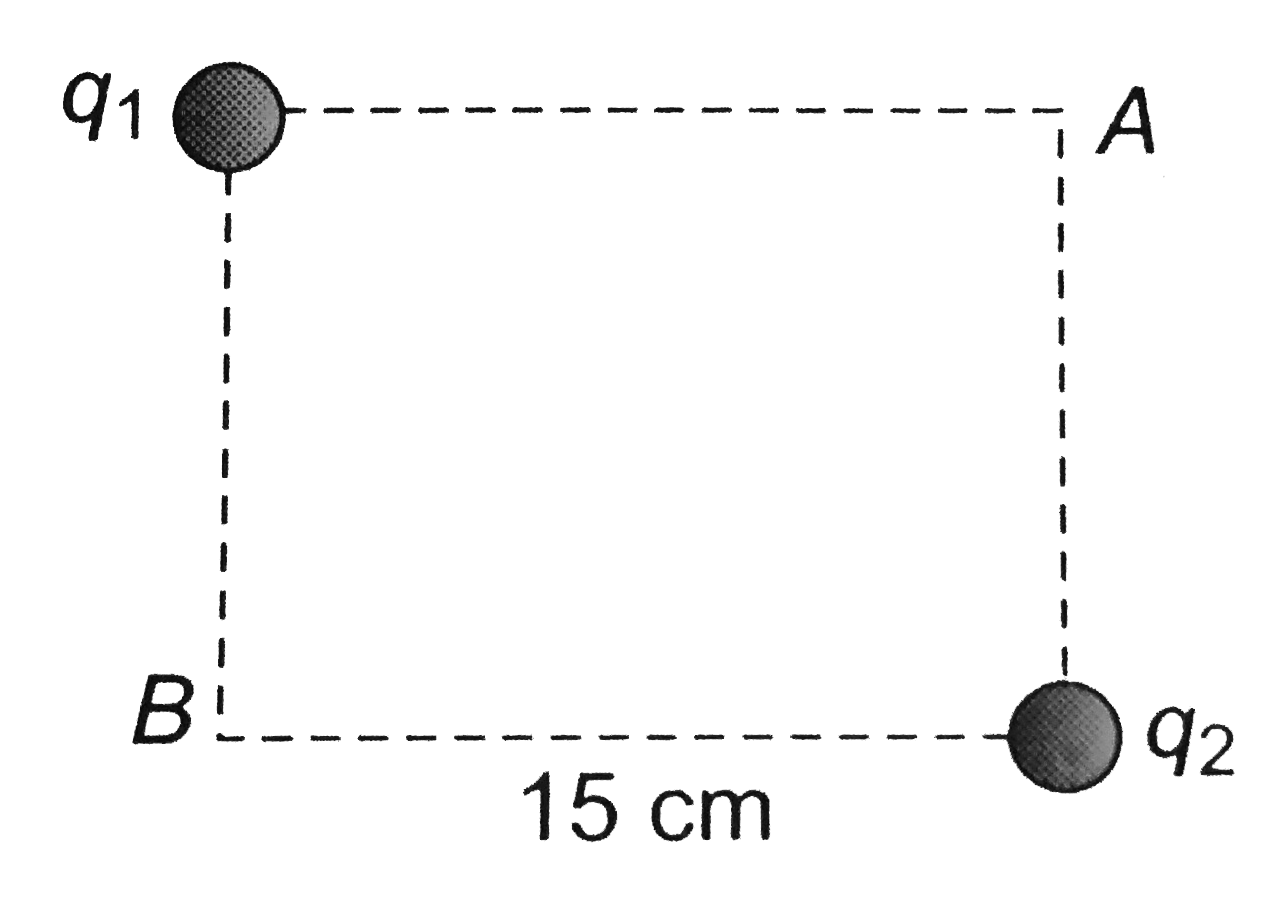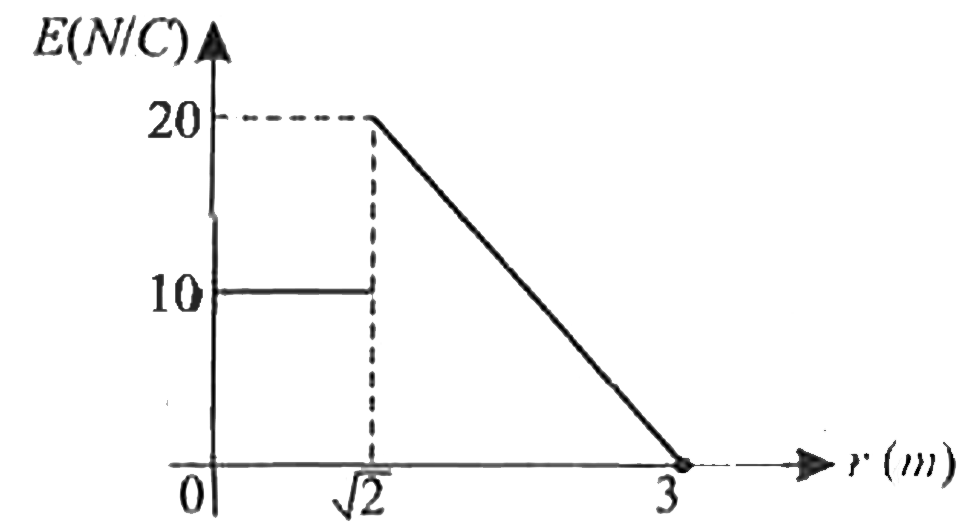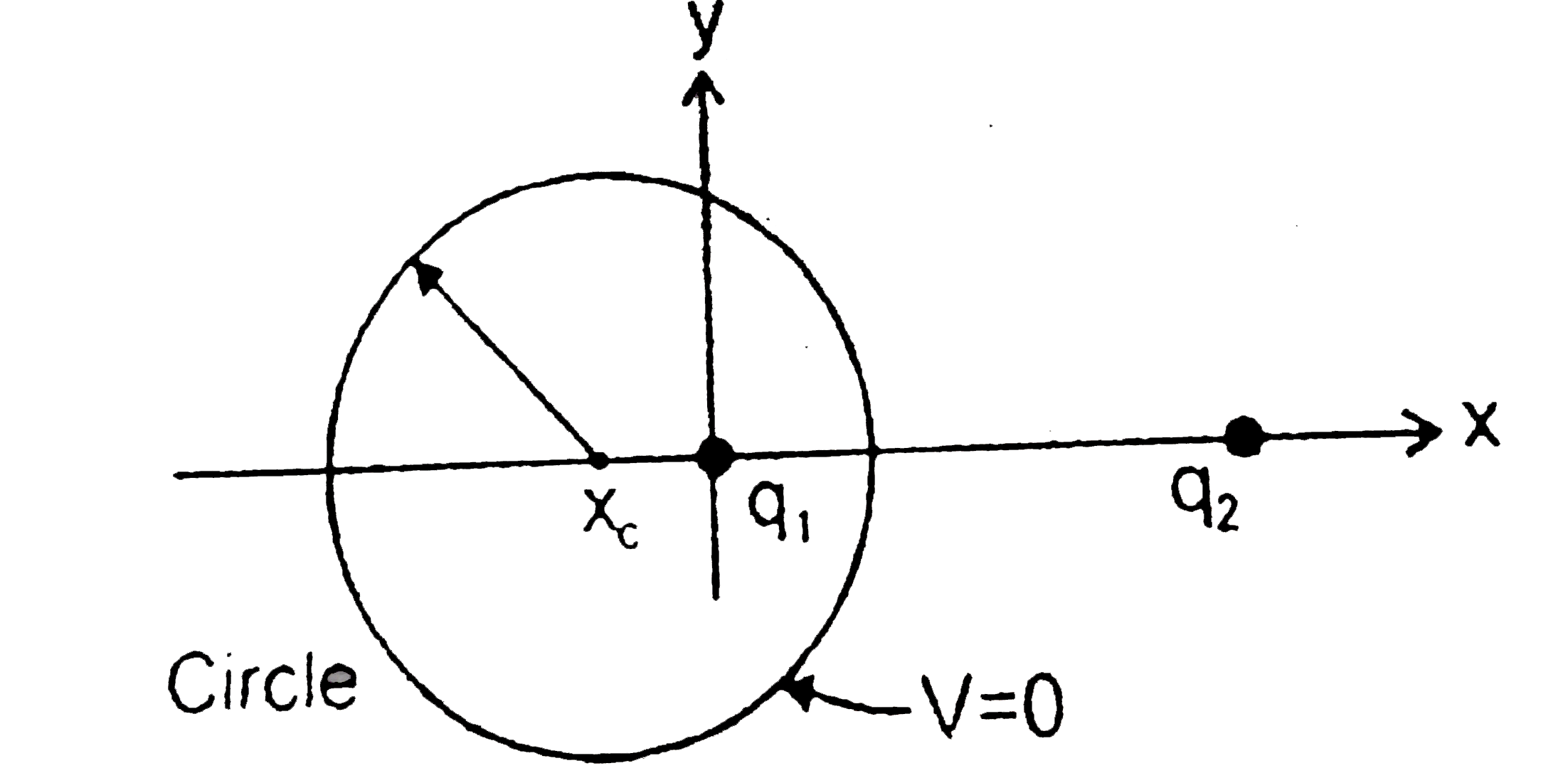Complete Solutions to DPP 3.1 of chapter ELECTRIC POTENTIAL of Class 12 book with complete answers and questions
| Class 12 | PHYSICS |
| Chapter | ELECTRIC POTENTIAL |
| CENGAGE PHYSICS DPP | DPP 3.1 |
| Number Of Questions | 14 |
| Academic Year | 2023-24 |
Three is an electric field E in the x - direction. If the work done by the electric field in moving a charge of `0.2 C` through a distance of `2 m` along a line making an angle `60^(@)` with the x- axis is `4 J`, then what is the value of E ?
02:15View SolutionFour equal charges `Q` are placed at the four corners of a square of each side is 'a'. Work done in removing a charge `-Q` from its centre to infinity is
03:49View SolutionCharges of `+(10)/(3) xx 10^(-9) C` are placed at each of the four corners of a square of side `8 cm`. The potential at the intersection of the diagonals is
02:46View SolutionThree charges `2q, -q, and -q` are located at the vertices of an equilateral triangle. At the center of the triangle,
06:30View SolutionTwo electric charges `12 mu C` and `-6 mu C` are placed `20 cm` apart in air. There will be a point `P` on the line joining these charges and outside the region between them, at which the electric potential is zero. The distance of `P` from `6 mu C` chrage is
02:01View SolutionA spherical conductor of radius `2 m` is charged to a potential of `120 V`. It is now placed inside another hollow spherical conductor of radius `6 m`. Calculate the potential to which the bigger sphere would be raised
02:13View SolutionTwo point charges `100 mu C` and `5 mu C` are placed at points `A and B` respectively with `AB = 40 cm`. The work done by external froce in displacing the charge `5 mu C` from B to C, where `BC = 30 cm`, angle `ABC = (pi)/(2)` and `(1)/(4pi epsilon_(0)) = 9 xx 10^(9)Nm^(2)//C^(2)`
03:31View SolutionIn the rectangle, shown below, the two corners have charges `q_(1) = - 5mu C` and `q_(2) = + 2.0 mu C`. The work done in moving a charge `+3.0 mu C` from `B to A` is (take `1//4 4pi epsilon_(0) = 10^(10) N-m^(2)//C^(2))`
 04:48View Solution
04:48View SolutionA charge `(-q)` and another charge `(Q)` are kept at two points `A and B` respectively. Keeping the charge `(+Q)` fixed at `B`, the charge `(-q)` at `A` is moved to another point `C` such that `ABC` forms an equilateral triangle of side `l`. The net work done in moving teh charge `(-q)` is
02:39View SolutionA point charge is surrounded symmetrically by six identical charges at distance `r` as shown in the figure How much work is done by the froces of electrostatic repulsion when the point charge at the centre is removed to infinity ?
 02:10View Solution
02:10View SolutionAn electric field 'E' whose direction is radially outward varies as distance from origin 'r' as shown in the graph E is taken as positive if its direction is away from the origin. Then the work done by electric field on a 2 C charge if it is taken from `(1,1,0)` to `(3,0,0)` is :
 01:56View Solution
01:56View Solution
A point charge `q_(1)=+6e` fixed at the origin of a coordinate system, and another point charge `q_(2)=-10e` is fixed at `x=8nm`, `y=0` the locus of all points in the xy plane for which potential `V=0` (other man inifinity) is a circle centered on the x-axis as shown.
Q. Radius R of the circle is12:03View SolutionA point charge `q_(1)=+6e` fixed at the origin of a conducting system, and another point charge `q_(2) = -10e` is fixed at `x=8` nm, `y=0`. The locus of all points in the `xy` plane for which potential `V=0` (other than infinity) is a circle consider on the x-axis, as shown

x-coordinate of the centre of the circle is01:24View Solution
A point charge `q_(1)=+6e` fixed at the origin of a coordinate system, and another point charge `q_(2)=-10e` is fixed at `x=8nm`, `y=0` the locus of all points in the xy plane for which potential `V=0` (other man inifinity) is a circle centered on the x-axis as shown.
Q. The potential at the centre of the circle is12:03View Solution
DPP 3.1 questions and complete solutions for chapter ELECTRIC POTENTIAL of CENGAGE PHYSICS (HINGLISH) of Class 12
